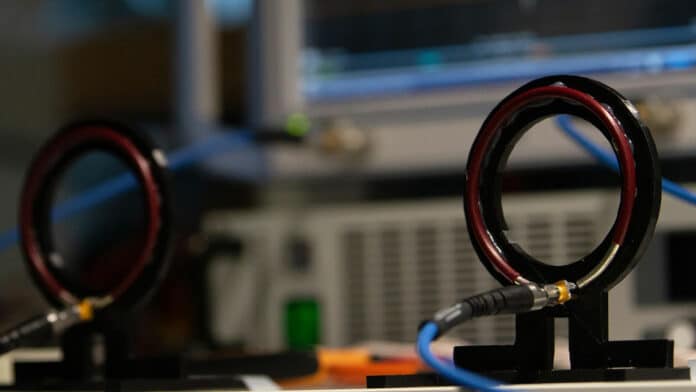Charging over short distances, like through induction pads, is highly efficient thanks to magnetic near fields used to transfer energy wirelessly between two objects. As long as the distance between the two antennas is small compared to the antenna size, conventional wireless power-transfer devices offer rather high power-transfer efficiency, over 90%.
However, the transfer efficiency dramatically drops for larger distances, making such devices impractical in certain situations.
Now, engineers at Aalto University have developed a new system that allows more efficient wireless power transmission over longer distances. They have optimized the way antennas transmitting and receiving power interact with each other, making use of the phenomenon of “radiation suppression.”
Through their research, the Aalto team showed that the high efficiency of wireless charging devices can be sustained over long distances by suppressing the radiation resistance of the loop antennas that are sending and receiving power.
They developed a new dynamic theory of wireless charging that looks more closely at both near (non-radiative) and far (radiative) distances and conditions. The system achieved high transfer efficiency at distances approximately five times the size of the antenna, utilizing the optimal frequency within the hundred-megahertz range.
Researchers tested their idea using two small loop antennas designed for the frequency range of interest. Both receiving and transmitting loops have the same radius of 3.6 cm and are placed at a center-to-center distance of 18 cm for coaxial and coplanar arrangements. And they found that radiation suppression is the mechanism that helps boost transfer efficiency by over 80%.
“We wanted to balance effectively transferring power with the radiation loss that always happens over longer distances,” says lead author Nam Ha-Van, a postdoctoral researcher at Aalto University. “It turns out that when the currents in the loop antennas have equal amplitudes and opposite phases, we can cancel the radiation loss, thus boosting efficiency.”
The new technique allows them to analyze, both in theory and in practice, any wireless power transfer system. This allows for a more thorough evaluation of power transfer efficiency at both near and far distances, which hasn’t been done before. The developed theory can also be applied to a coupling between antennas of different types and to energy transfer between nano-objects.
Journal reference:
- N. Ha-Van, C.R. Simovski, F.S. Cuesta, P. Jayathurathnage, and S.A. Tretyakov. Effective Midrange Wireless Power Transfer with Compensated Radiation Loss. Physical Review Applied, 2023; DOI: 10.1103/PhysRevApplied.20.014044
